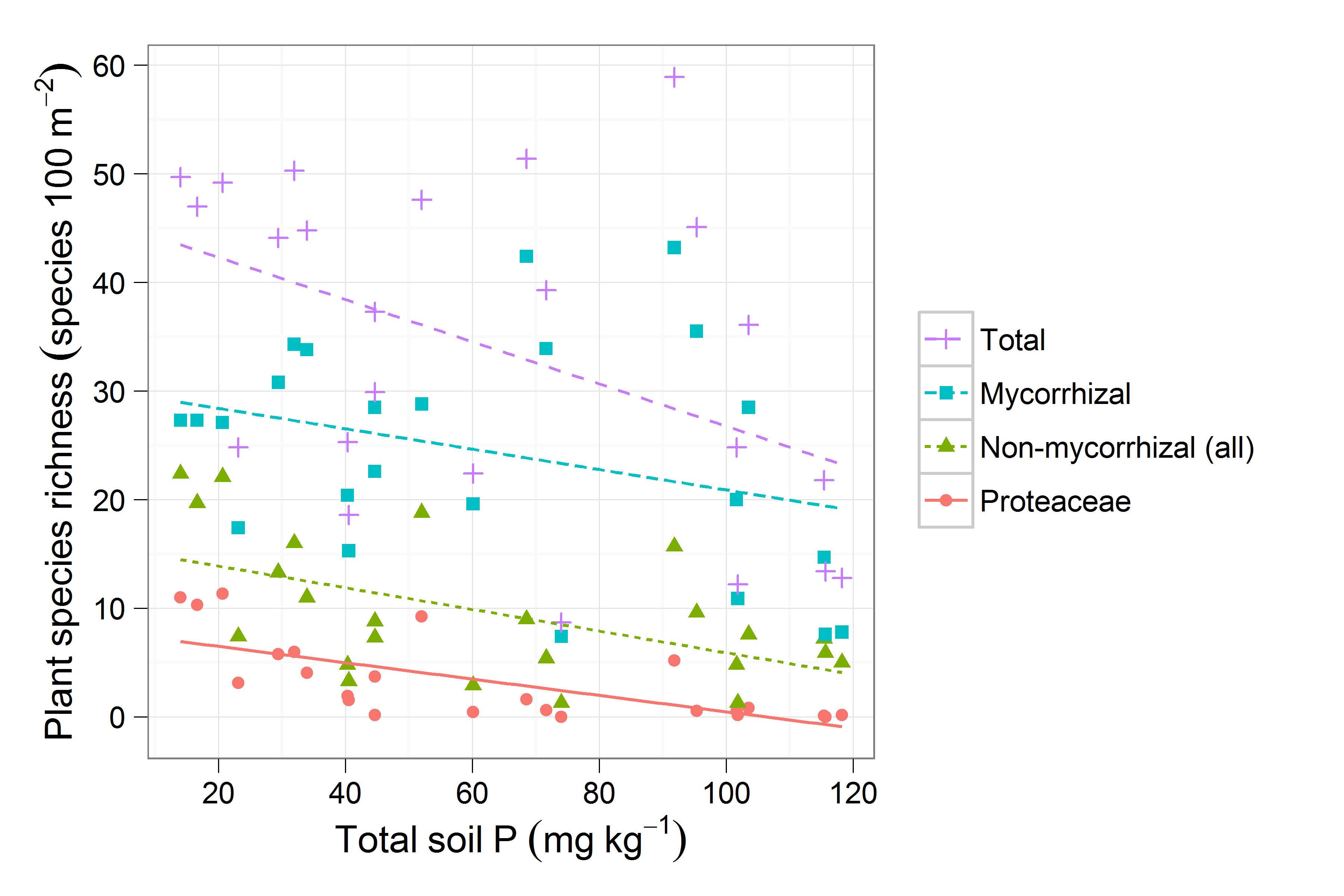Mineral nutrition of native plants in our Biodiversity Hotspot in a global context
Hans Lambers
School of Plant Biology, The University of Western Australia, Australia
South-western Australia was a part of Gondwanaland, and some of the most ancient parts of the Earth’ crust can be found here. Other parts of the landscape originated more recently from calcareous marine deposits. Therefore, the soils of Western Australia are amongst the most heavily leached and nutrient-impoverished in the world. Moreover, the soils on lateritic profiles tightly bind phosphate, so that, phosphorus (P) is also poorly available to plants that are not adapted to these conditions. The old, climatically buffered ancient landscapes of south-western Australia also comprise one of the world’s hotspots of higher plant species diversity. Therefore, this environment offers a unique opportunity to study plant adaptations to nutrient-poor conditions.
What is most intriguing is that the greatest higher plant species diversity is found on the most P-impoverished soils on the south-western Australian sandplains (kwongan), as shown in Figure 1. What is even more intriguing is that those species that lack mycorrhizal associations, which are considered to help the plant acquire P from nutrient-poor soils, are found predominantly on the poorest soils. When soil P increases, the Proteaceae peter out. There is an important message for managers here: don’t mess with soil P, or you will lose your precious Proteaceae!
What might be the causes of increased soil P which represents a threat to an iconic component of our kwongan flora? Increased fire frequency is one of them, because burning the vegetation returns P to soil that was originally locked up in the vegetation. Run-off from farmland or urban activities is another source. Some fire retardants contain P, and these should be avoided in severely P-impoverished bushland in WA. There are other that can be included, but the only one I want to add to the list here is the use of phosphite. This chemical is used to combat Phytophthora cinnamomi (dieback). In soil, microorganisms quickly convert it into phosphate. Since phosphite is used at a rate similar to what farmers use in the wheatbelt, the fertilising effect of phosphite spraying is significant. We cannot simply stop spraying phosphite and let dieback proceed. However, using phosphite cannot be a long-term solution and phosphite must be replaced by something that suits our P-impoverished landscapes much better. This is the subject of ongoing research efforts at UWA and Murdoch, supported by DEC and several partners.
A relatively large proportion of species from the P-poor environments in south-western Australia cannot produce an association with mycorrhizal fungi, but, instead, produce cluster roots (in most Proteaceae and in some Fabaceae) or dauciform roots (in Cyperaceae). These specialised roots are an adaptation both in structure and in functioning. Cluster-root-bearing Proteaceae in south-western Australia occur on the most P-impoverished soils (Fig. 1), whereas the mycorrhizal Myrtaceae tend to inhabit the less P-impoverished soils in this region.
The functioning of cluster roots in Proteaceae and Fabaceae has received considerable attention. Dauciform roots in Cyperaceae have been explored less, but they appear to function in a very similar manner. The growth of specialised cluster roots or dauciform roots in species of the Cyperaceae, Fabaceae and Proteaceae is stimulated when plants are grown at a very low P supply, and suppressed when leaf P concentrations increase. These specialised roots are all short-lived structures, and they release large amounts of carboxylates during an ‘exudative burst’ at rates that are considerably faster than reported for non-specialised roots of a wide range of species. Carboxylates are organic anions as found in citric acid and malic acid. The carboxylates play a pivotal role in ‘mining’ P that is sorbed onto soil particles.
Because the world P reserves are being depleted whilst vast amounts of P are stored in fertilised soils, there is a growing need for crops with a high efficiency of P acquisition. Some Australian native species have traits that would be highly desirable for future crops. The possibilities of introducing P-acquisition efficient species in new cropping and pasture systems are currently being explored. Western Australian Banksia species are also the most efficient species studied so far when it comes to using the P they have acquired for their photosynthesis. Therefore, possible strategies to introduce traits associated with a high P-use efficiency into future crop species are also considered promising.
High P-use efficiency in Proteaceae includes a highly efficient mobilisation of P from senescing leaves. In addition, many species operate at extremely low leaf P concentrations exhibiting rates of photosynthesis similar to crop plants; expressed per unit leaf P, their rates of photosynthesis are extraordinarily high.
Figure 1. Plant diversity and soil phosphorus status in south-western Australia’s global biodiversity hotspot. Note the relative abundance of non-mycorrhizal species on soils with the lowest phosphorus (P) content.

